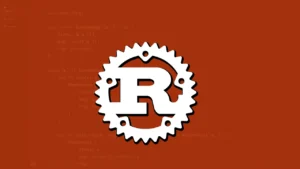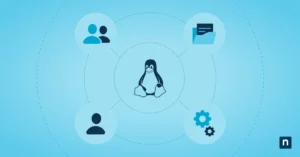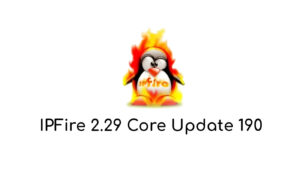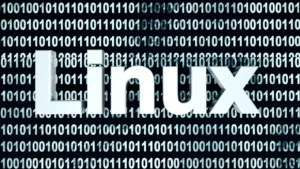As is already known in the world of free software, Debian GNU Linux is a distribution and a large project with collaborators from all over the world. A new release is announced within its official website in the news section at:
They have given the gratifying news of the release of the new stable version of the operating system which has always, had the crown or title of, “The universal operating system”. By giving it a radial update in some content sections on their website due to the arrival of the new stable version, which includes many new software improvements.
If you are a person who is somehow still oblivious of this impressive GNU Linux distribution, it is crucial that you visit the official documentation page of this excellent project at the following URL:
What is the Debian project?
The Debian project is a worldwide group of volunteers who strive to produce an operating system distribution that is composed entirely of free software. The main product of the project to date is the Debian GNU / Linux software distribution, which includes Linux as the core of the operating system, as well as thousands of pre-packaged applications. Different types of processors are supported to a greater or lesser extent, including 32-bit and 64-bit x86 processor, ARM, MIPS, PowerPC, and IBM S / 390.
Debian motivated the formation of Software In The Public Interest, Inc., a non-profit organization, located in New York. SPI was founded to help Debian and other similar organizations develop and distribute open hardware and software. Among other things, SPI provides a mechanism by which the Debian project can accept contributions that are tax-deductible in the United States of America.
For more information about Free Software, see the Debian Social Contract and associated Debian Free Software Guidelines, or the What does free mean? Page.
A brief history
Ian Murdock officially founded the Debian project on August 16, 1993. (There is also a scanned print of that announcement).
At the time, the concept of a Linux “distribution” was something new. Ian intended Debian to be an open distribution, in the spirit of Linux and GNU (read the manifesto provided as an appendix to this document for more details). The creation of Debian was sponsored by the FSF’s GNU project for one year (November 1994 to November 1995).
Debian was intended to be carefully and consciously developed, and to be maintained and supported with similar care. What started as a small, tight-knit group of free software hackers gradually grew into a large, well-organized community of developers and users.
What are the improvements in this new stable version?
It is gratifying to know that the project in this new stable version has achieved great changes, among which were announced in Debian News with the news of the arrival of the stable version of Debian 11 Code named “bullseye” are:
- The first version to provide a Linux kernel with support for the exFAT file system has been created.
- A major improvement has to do with: Most modern printers are capable of driverless printing and scanning, making the use of manufacturer-specific (often non-free) drivers unnecessary. Bullseye introduces a new package, ipp-usb, which uses the IPP-over-USB protocol, independent of the manufacturer and supported by many current printers. This allows a USB device to be treated as a network device. The official SANE controllerless backend is provided by sane-escl in libsane1, which uses the eSCL protocol.
- The next enhancement is an issue with the systemd boot manager (the Debian GNU / Linux commissioned boot system which shouldn’t be the only personal opinion) enables its persistent journal functionality, by default, with an implicit return to volatile storage if necessary. This allows users who do not require special functionality to uninstall the traditional log writing daemons and switch to exclusively using the systemd journal.
- Chinese, Japanese, Korean and many other languages now have a new input method: Fcitx 5, successor to buster’s popular Fcitx4; this new version has much better support for Wayland extensions (the default screen manager).
What desktop environments can you use in this version?
It is worth one of the genius of using GNU / Linux is that you can choose from a varied group of desktop environments, of which we can list the most famous or most used today and that are added in this new stable version of this popular operating system and father of many GNU / Linux distributions viz. GNOME, KDE Plasma, LXDE, LXQt, MATE, Xfce, among other options.
How can I get it?
This new version of Debian is awesome and you can get it through the following URL:
From which, you can download the version of Debian adapted to the processor architecture of the computer you are using as a GNU/Linux user.
And not only this, you can also choose live images that you can test without having to install the operating system or select complete images on CD, DVD, BLU-RAY or other bootable images from USB memory sticks (pen-drives). You can also perform installations by NETWORK where the image to downloading is light and with a stable internet, it allows the entire installation process of the basic software packages to be done using the internet and the project’s repository servers.
Can I upgrade from Debian 10 “buster” to Debian 11 “bullseye”?
The answer is yes, but taking into account those announced in Debian news in the articles about the release of the new stable version of Debian GNU Linux 11 “bullseye”.
Taking into account that the sources list must be updated at the time of the update to a new stable Debian version.
Final note
Debian, for years, has been base upon which, most GNU/Linux distributions including one of the most popular distro called Ubuntu has been built. It is to be expected that always every 4 or 5 years there will be a stir in stable versions of it since many projects or distributions based on it, they should take advantage of the growing architecture support and available infrastructure as a base. Albeit, there is always a thing that I missed when it comes to Debian distribution. It would be really interesting to see a Debian ‘Fresh’ edition or semi-rolling release type of distribution. A distribution with shorter release cycle would attract youth and more users especially ones with newer hardware. Diversity is always welcomed but nothing wrong in pushing some limits in popularizing a specific distribution. I hope by next release a new edition with shorter release cycle is also made available, so new users are not fearful in trying Debian on their bleeding-edge hardware. I hope my comment is taken as a positive note and not a rant or a complaint.









